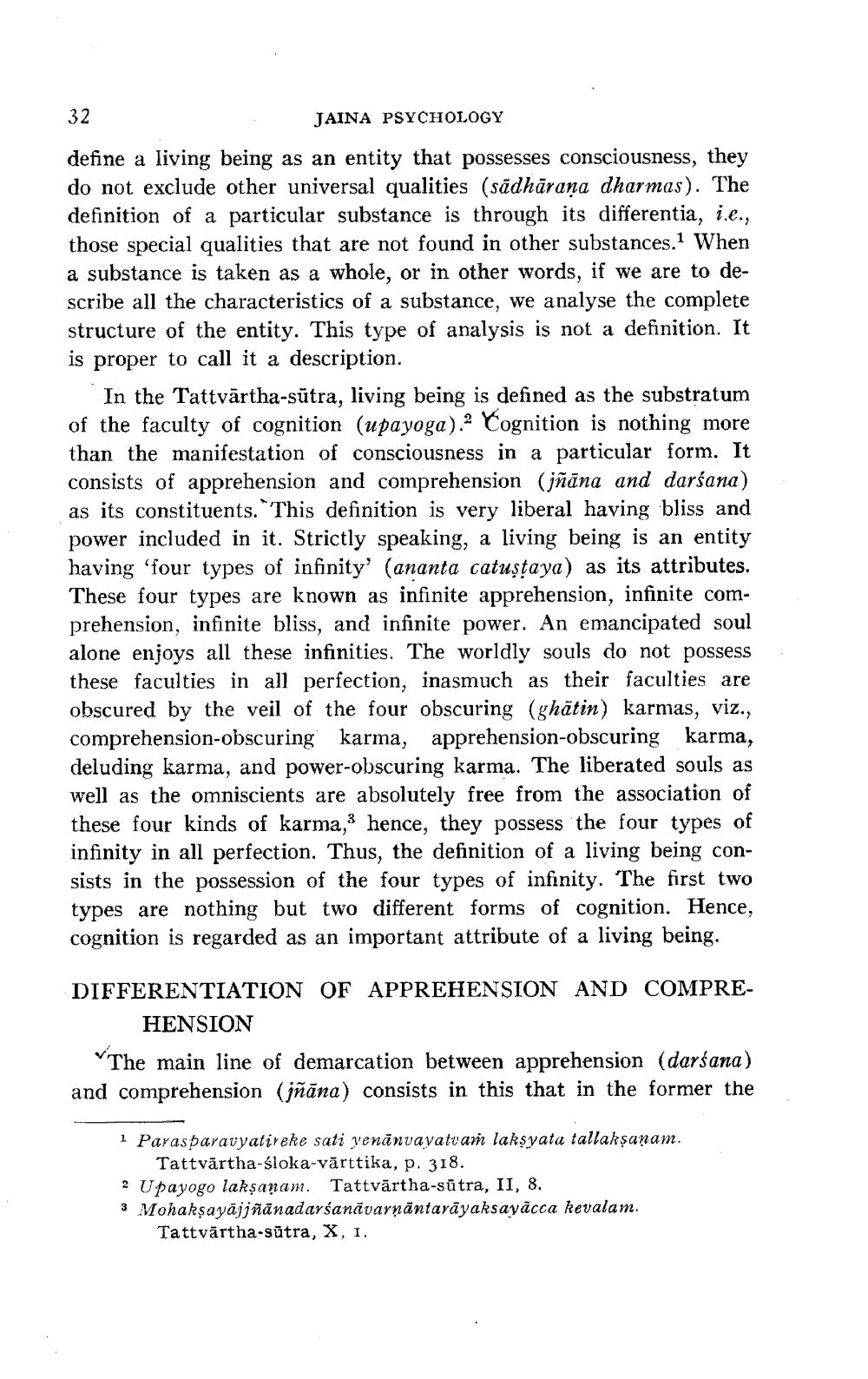________________
32
JAINA PSYCHOLOGY
define a living being as an entity that possesses consciousness, they do not exclude other universal qualities (sādhārana dharmas). The definition of a particular substance is through its differentia, i.e., those special qualities that are not found in other substances.1 When a substance is taken as a whole, or in other words, if we are to describe all the characteristics of a substance, we analyse the complete structure of the entity. This type of analysis is not a definition. It is proper to call it a description.
In the Tattvärtha-sutra, living being is defined as the substratum of the faculty of cognition (upayoga).2 Cognition is nothing more than the manifestation of consciousness in a particular form. It consists of apprehension and comprehension (jñāna and darśana) as its constituents. This definition is very liberal having bliss and power included in it. Strictly speaking, a living being is an entity having 'four types of infinity' (ananta catuştaya) as its attributes. These four types are known as infinite apprehension, infinite comprehension, infinite bliss, and infinite power. An emancipated soul alone enjoys all these infinities. The worldly souls do not possess these faculties in all perfection, inasmuch as their faculties are obscured by the veil of the four obscuring (ghätin) karmas, viz., comprehension-obscuring karma, apprehension-obscuring karma, deluding karma, and power-obscuring karma. The liberated souls as well as the omniscients are absolutely free from the association of these four kinds of karma, hence, they possess the four types of infinity in all perfection. Thus, the definition of a living being consists in the possession of the four types of infinity. The first two types are nothing but two different forms of cognition. Hence, cognition is regarded as an important attribute of a living being.
DIFFERENTIATION OF APPREHENSION AND COMPRE
HENSION
The main line of demarcation between apprehension (darśana) and comprehension (jñāna) consists in this that in the former the
1 Parasparavyatireke sati yenänvayatvam lakṣyata tallakṣaṇam. Tattvärtha-śloka-värttika, p. 318.
2 Upayogo lakṣaṇam. Tattvärtha-sütra, II, 8.
3 Mohakṣayajjñānadarśanāvarṇāntarāyaksayacca kevalam. Tattvärtha-sutra, X, 1.




